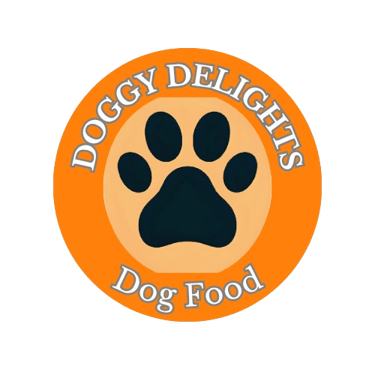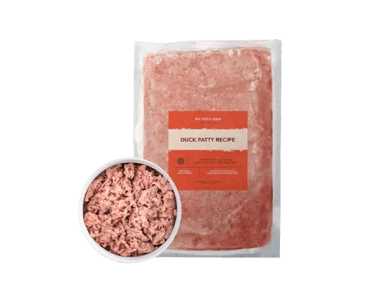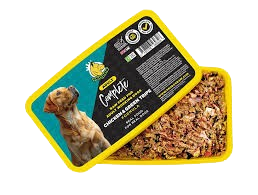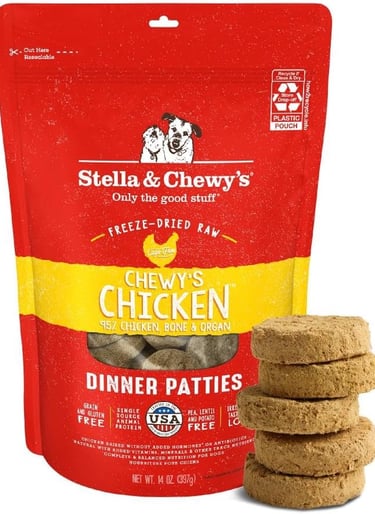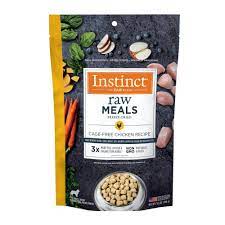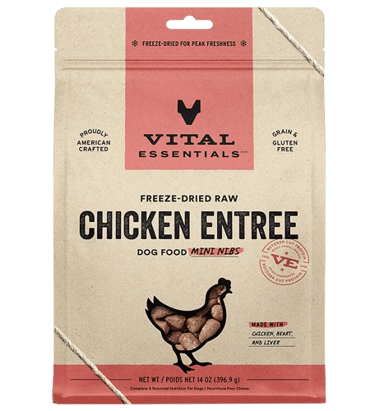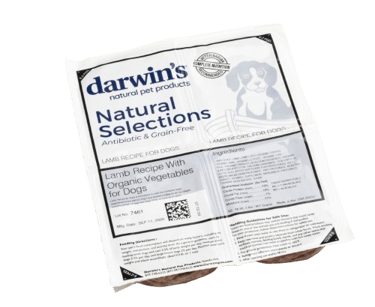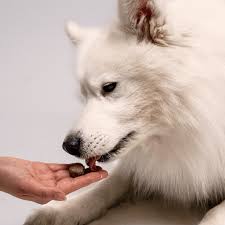Leading Raw Dog Foods

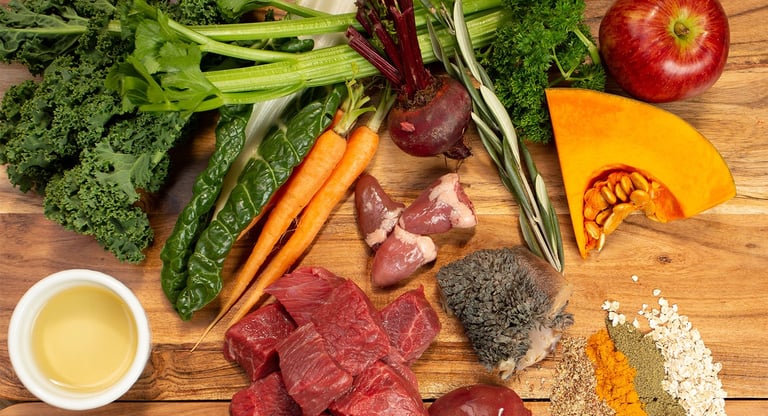











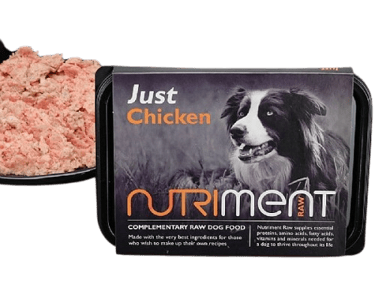

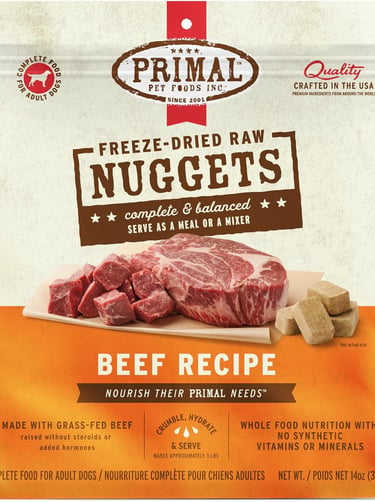

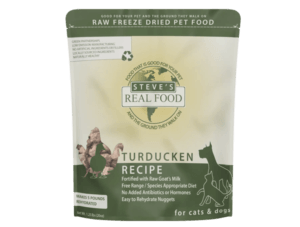





The Raw Truth:
Is a Raw Food Diet Right for Your Dog?
What is a Raw Food Diet for Dogs?
A raw food diet, often referred to as BARF (Biologically Appropriate Raw Food), consists of uncooked meat, bones, and sometimes vegetables, fruits, and dairy. Advocates believe it mimics the natural diet of dogs' ancestors, but is it suitable for every dog?
Pros of a Raw Food Diet
1. Improved Digestion:
Raw diets are easier to digest, leading to smaller and firmer stools.
2. Shinier Coat and Healthier Skin:
High-quality proteins and fats promote a glossy coat.
3. Cleaner Teeth:
Chewing on raw bones can reduce tartar buildup.
4. Higher Energy Levels:
Many owners report their dogs are more active on raw diet
5. Allergy Relief:
Eliminating processed ingredients can reduce allergic reactions.
Cons of a Raw Food Diet
1. Bacterial Contamination:
Raw meat can harbor harmful bacteria like Salmonella and E. coli, posing risks to both dogs and humans.
2. Nutritional Imbalance:
Without proper formulation, raw diets may lack essential nutrients.
3. Choking Hazards:
Bones can cause choking or internal injuries.
Does a Raw Food Diet Benefit All Dogs?
Not all dogs thrive on raw diets. Puppies, senior dogs, or those with compromised immune systems may face higher risks from pathogens or nutritional deficiencies. Always consult a veterinarian before transitioning your dog to raw food.
Here are 9 trusted brands offering balanced raw diets
We Feed Raw:
Beef, turkey, organ meats, High protein supports digestion
Duck, lamb, fish oil Omega-3 for skin and coat health
Nutriment:
Salmon, chicken liver, spinach Nutrient-dense; easy to serve
Vital Essentials:
Chicken, whole eggs | Single-protein options for allergies
Home > Leading Dog Food > Leading Raw Dog Foods
Grass-fed beef, organic vegetables Organic ingredients; customizable plans
Stella & Chewys:
Fresh Made Chicken
Turkey necks, sardines High in calcium and omega-3s
Final Thoughts
A raw food diet can offer numerous benefits but also comes with risks. It’s not a one-size-fits-all solution—careful planning and veterinary guidance are essential to ensure your dog’s safety and health.
4. Expense and Time Commitment:
Preparing raw meals is costly and time-consuming compared to kibble.
Amazon Associate
Steve's Real Food
Turkey necks, sardines High in calcium and omega-3s
Amazon Associate
Transitioning your dog to a raw food diet as shown in this video.
Get the Best Deals
Free Dog Food Alerts
How to Choose the Correct Dog Food
Related Articles:
1. What are the main risks of a raw food diet for dogs?
2. How can I minimize the risk of bacterial contamination when feeding my dog a raw food diet?
3. Are there specific breeds that benefit more from a raw food diet?
4. How does freezing raw dog food affect bacterial contamination?
5. How does a raw food diet compare to a balanced commercial dog food in terms of nutritional value?
Instinct Raw Boost:
Natural Dry Dog Food with Freeze Dried Pieces, High Protein, Grain Free Recipe Real Chicken
Amazon Associate
Amazon Associate
Amazon Associate
Amazon Associate
Amazon Associate
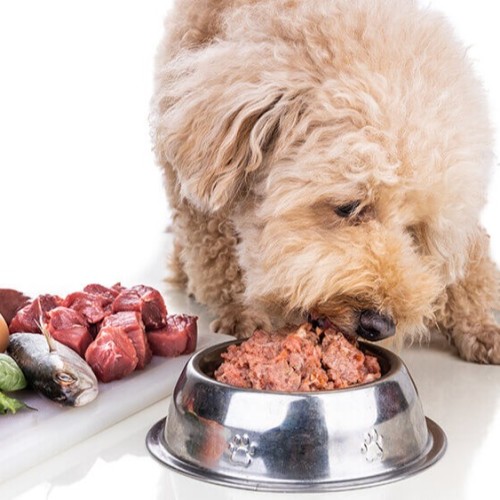

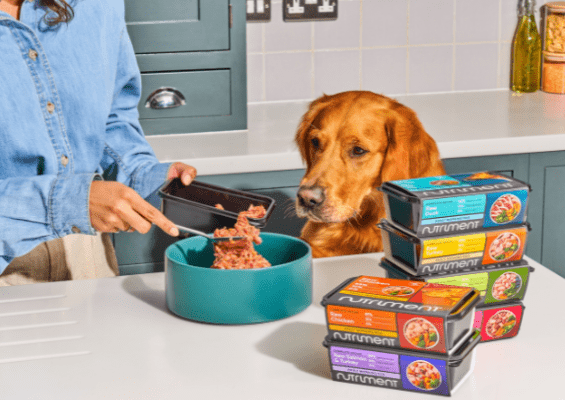

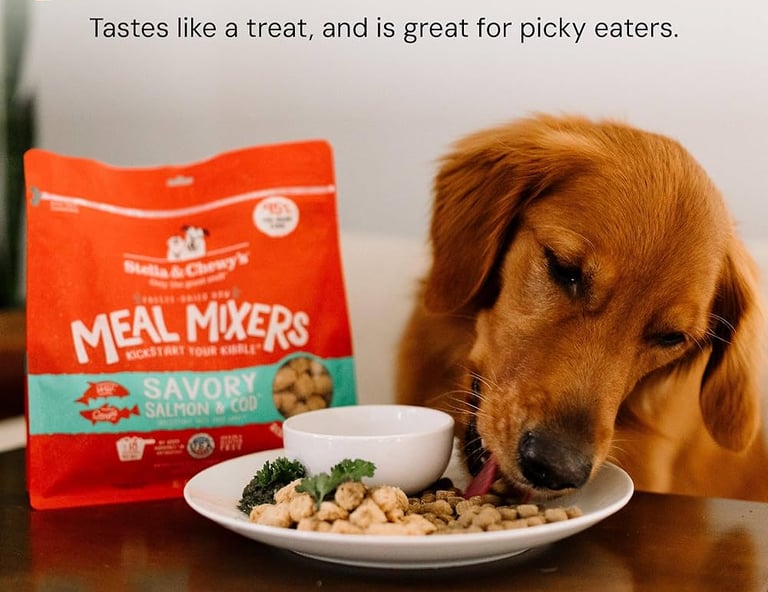

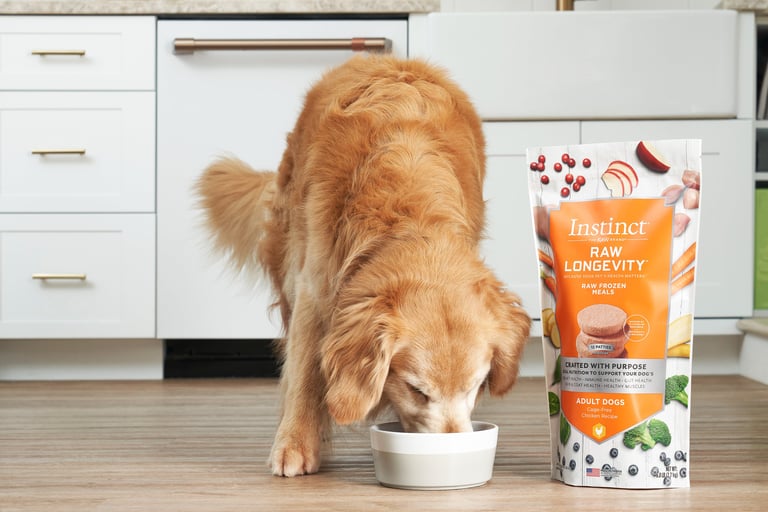

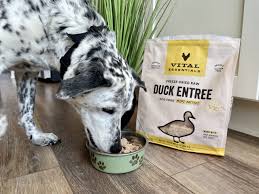

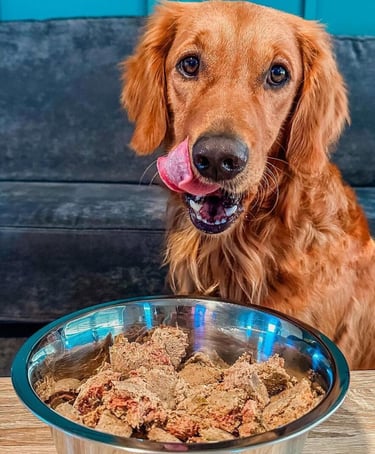

Amazon Associate
1.What are the main risks of a raw food diet for dogs?
The main risks of a raw food diet for dogs include:
1. Bacterial contamination:
Raw meat can harbor harmful bacteria such as Salmonella, E. coli, Campylobacter, and Listeria, posing health risks to both dogs and humans. Studies have shown that nearly 25% of raw food samples tested positive for harmful bacteria. Are raw food diets worth the risk?
2. Nutritional imbalances:
Many raw diets lack essential nutrients or have improper ratios of nutrients. One study found that 94% of raw meat-based diets had at least one nutrient imbalance, and 66% had more than five[5]. These imbalances can lead to health problems, especially in growing dogs[5]. Here are three raw feeding risks that you should be aware of.
3. Gastrointestinal issues:
Raw diets can cause gastroenteritis, vomiting, and diarrhea due to bacterial contamination or high fat content.
4. Dental and internal injuries: Bones in raw diets can lead to fractured teeth, choking hazards, and internal punctures or obstructions in the gastrointestinal tract.
5. Spread of antibiotic-resistant bacteria:
Some studies have found that raw meat diets can contain antibiotic-resistant bacteria, which is a significant concern for both animal and human health.
6. Cross-contamination risks:
Even with careful handling, raw diets increase the risk of spreading bacteria like E. coli and Salmonella in the household.
7. Potential for parasitic infections:
Raw meat can contain parasites that may be harmful to dogs.
8. Vitamin toxicity:
Diets high in liver content may lead to vitamin A toxicity if fed for extended periods.
These risks have led many veterinarians, the FDA, and the VCA animal hospitals to advise against feeding raw diets to dogs. It's important to note that there are no clinically proven benefits of a raw food diet that outweigh these risks.


2. How can I minimize the risk of bacterial contamination when feeding my dog a raw food diet?
To minimize the risk of bacterial contamination when feeding your dog a raw food diet, follow these essential practices:
To minimize the risk of bacterial contamination when feeding your dog a raw food diet, follow these essential practices:
1. Source high-quality ingredients from reputable suppliers, preferably organic and local farms.
2. Store raw food properly:
- Freeze raw pet food until needed.
- Use a dedicated container for storage.
- Keep raw pet food separate from human food in the refrigerator.
3. Practice safe food preparation:
- Designate a specific area for raw food prep.
- Use separate utensils for raw food preparation.
- Don't rinse raw meat, as this can spread bacteria.
- Thaw frozen raw food in the refrigerator or microwave, not on countertops.
4. Handle raw food safely:
- Wash hands thoroughly before and after handling raw pet food.
- Clean all surfaces, utensils, and equipment with hot, soapy water after use.
- Consider using pet-safe disinfectants on countertops and surfaces.
5. Refrigerate or discard leftovers promptly.
6. Serve and manage leftovers properly:
- Serve food immediately after preparation.
- Remove uneaten food within 15-20 minutes.
- Don't leave raw food out for more than two hours (one hour in warm temperatures above 21°C
7. Keep your dog and their eating area clean:
- Feed your dog in a designated area and sanitize it regularly.
- Wash your dog's face after each meal, especially if they have long beards.
- Clean up and dispose of feces daily.
8. Be vigilant about expiration dates and food quality:
- Always check expiry dates on raw pet food packages.
- Discard any food that looks or smells off.
By following these guidelines, you can significantly reduce the risk of bacterial contamination and ensure a safer raw feeding experience for your dog.


Certain dog breeds and individual dogs may benefit more from a raw food diet due to their specific health needs, size, or activity levels. Here are some examples:
Breeds That May Benefit More from a Raw Food Diet:
Allergy-Prone Breeds
Breeds like Bulldogs, Retrievers, and Terriers often suffer from food allergies or sensitivities. A raw diet can help reduce inflammation and improve skin and coat health due to its higher omega-3 fatty acid content and absence of fillers like grains and artificial.Active and Working Dogs
High-energy breeds such as Border Collies, German Shepherds, and Huskies may thrive on a raw diet because of its high protein content, which supports muscle development and sustained energy levels.webmd+1Large and Giant Breeds
Breeds like Great Danes, Mastiffs, and Saint Bernards can benefit from raw diets tailored to support joint health. Including glucosamine-rich ingredients such as chicken feet or green-lipped mussels can help maintain joint mobility.Overweight Dogs
Breeds prone to obesity, such as Labradors or Beagles, may benefit from raw diets due to the absence of fillers like grains and sugars, which can help with weight management while maintaining muscle.Dogs with Digestive Issues
Breeds with sensitive stomachs, such as Boxers or Dachshunds, may experience better digestion on a raw diet due to the natural enzymes present in uncooked food that aid in breaking down nutrients.
Important Considerations
While some breeds may benefit more from a raw diet, not all dogs are suitable candidates. Puppies, immunocompromised dogs, or those with certain medical conditions (e.g., pancreatitis) may not tolerate raw feeding well. Always consult a veterinarian before transitioning your dog to a raw diet to ensure it meets their specific nutritional needs safely.


4.How does freezing raw dog food affect bacterial contamination?
Freezing raw dog food slows bacterial growth but does not eliminate bacteria entirely. Here's how freezing affects bacterial contamination:
Bacteria Enter Dormancy:
Freezing raw dog food at 0°F (-18°C) or below halts bacterial activity by putting bacteria like Salmonella, E. coli, and Listeria into a dormant state. However, these bacteria remain alive and can become active again once the food is thawed.
Limited Effectiveness Against Certain Bacteria:
While freezing can kill some bacteria, such as Campylobacter, others like Listeria and Salmonella survive freezing temperatures. These bacteria may still pose risks upon thawing.
Antibiotic-Resistant Bacteria:
Studies have shown that raw-frozen dog food often contains antibiotic-resistant bacteria, which freezing cannot eliminate. These bacteria pose risks to both pets and humans through direct contact or environmental contamination.
Best Practices to Minimize Risks:
To reduce bacterial contamination risks when feeding frozen raw dog food:
- Store food at 0°F (-18°C) or below to prevent bacterial growth.
- Thaw raw food in the refrigerator, not at room temperature, to avoid bacterial activation.
- Handle raw food with care to prevent cross-contamination by cleaning surfaces, utensils, and hands thoroughly after contact.
While freezing preserves the nutritional value and freshness of raw dog food, it is not a substitute for safe handling practices. Proper storage and hygiene are essential to minimize health risks for both pets and humans.


5.How does a raw food diet compare to a balanced commercial dog food in terms of nutritional value?
Raw food diets and balanced commercial dog foods differ significantly in their nutritional profiles and potential health impacts:
1. Nutrient density:
Raw diets are often praised for their high-quality, unprocessed nutrients, which some believe are easier for dogs to absorb[1]. The lack of heat processing in raw foods may result in higher nutritional value compared to cooked diets.
2. Macronutrient composition:
Raw meat-based diets (RMBDs) typically consist primarily of protein and fat, while commercial foods often include higher percentages of carbohydrates[3]. The primary difference between raw and commercial pet food lies in their macronutrient profiles, with commercial pet foods typically having a higher carbohydrate content
Some studies have found differences in certain blood markers between dogs fed raw diets and those fed kibble. For example, one study reported lower globulin and total protein concentrations in raw-fed dogs, suggesting a potential decrease in inflammation.
3. Digestibility:
Raw diets are often associated with improved stool consistency, with raw-fed dogs typically producing firmer stools than those fed kibble.
4. Nutritional completeness:
Most processed commercial foods are designed to provide a balanced diet with the right mix of proteins, fats, carbohydrates, vitamins, and minerals[1]. In contrast, some raw diets may require careful formulation to ensure nutritional completeness.
5. Enzyme preservation:
Raw foods retain natural enzymes that are denatured by heat in cooked diets, which some proponents argue may be beneficial for digestion.
It's important to note that while many raw diet advocates claim superior health benefits, long-term comparative feeding studies showing dogs eating fresh diets live longer and experience less disease than those eating kibble or canned foods are limited[6]. The choice between raw and commercial diets should be made in consultation with a veterinarian, considering the individual dog's health needs and the owner's ability to safely handle and prepare raw food.
